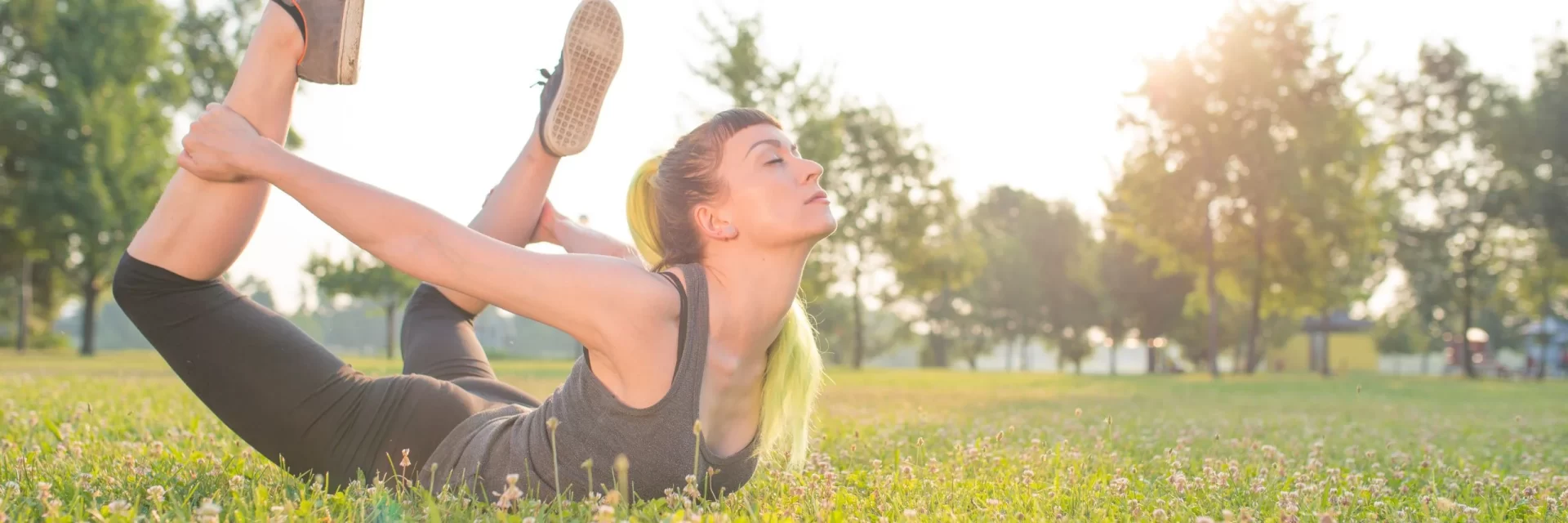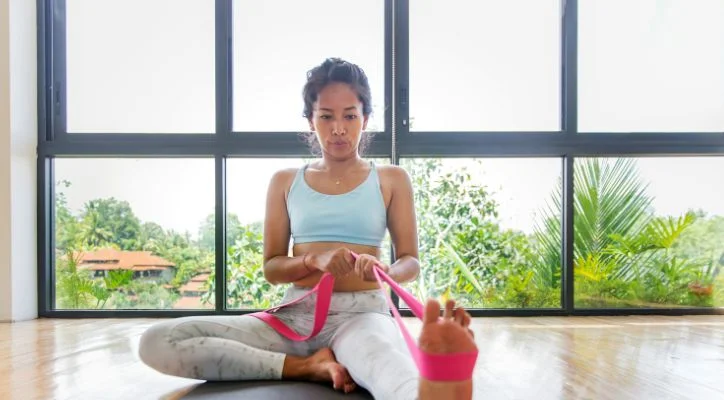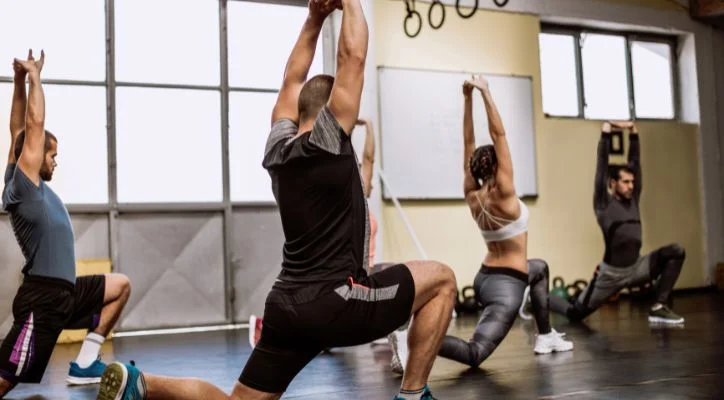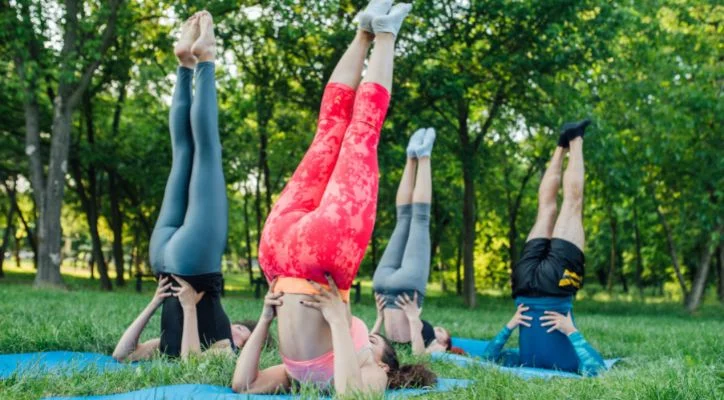
The Perfect 10-Minute Morning Stretch Routine
Stretching in the morning can have a huge positive impact on the rest of your day. It’s true! Consider trying our 10-minute morning stretch routine tips.
Get Up, Get Limber, Get Results
What’s the healthiest way you can start your morning? Is it a well-balanced breakfast?
What about exercising to lose weight?
Those are great additions to any healthy morning regimen, but if you said a 10-minute morning stretch routine, you’d be correct.
Stretching can have a huge positive impact on many other parts of our morning. Whether it’s keeping you from cramping up during a long morning commute, or trying to improve your appetite for breakfast, stretching can help with lots of things.
We’ve got a handful of stretches that you should really consider adding to your 10-minute morning stretch routine.
However, before we jump into those suggestions, let’s talk about the benefits of doing morning stretches, how to stay consistent with it, and some products that might help you with your 10-minute morning stretch routine.
What are the Benefits of a 10-Minute Morning Stretch Routine?
There is an incredible array of benefits to stretching, especially at the start of the day. One of the biggest is improvements to your flexibility.
Not only does strong flexibility help reduce the risk of injuries when you’re performing physical activities, but it can improve blood flow and functionality in your muscles, and help give joints the ability to move their full range of motion.
If you’ve got a lot of physical activities to do throughout the day, this added flexibility can improve not only your ability to perform activities, but it can improve your performance while doing them as well.
Range of motion is absolutely essential throughout the day, whether you’re walking around an office talking to colleagues, or you’re running equipment on the shop floor.
We all move around throughout the day. Avoiding unnecessary strains and cramping by stretching, helps us all go about our days in a happier, healthier way.
How to Stay Consistent with a 10-Minute Morning Stretch Routine

One of the easiest ways that you can stay consistent with a 10-minute morning stretch routine is to try and build it into your regular morning schedule.
Set aside a bit of extra time to give yourself time to stretch. You won’t be stretching effectively or safely if you’re trying to rush.
As with many other routines like detox or morning skincare routines, sometimes it can be helpful to consider setting alarms for yourself to remind you when it’s time to move from one task to another.
This way, you don’t have to worry about accidentally spending too much time on one thing, and then being forced to rush through another – or worse, risk being late to start the day.
Making stretching part of your self-care and mindfulness routine in the morning is another way that you can try to justify the extra time spent warming up your muscles before you jump into any physical activities.

Stretching is very low-impact and offers us the opportunity to spend time preparing ourselves mentally to face any upcoming obstacles.
Just like meditation or yoga, a 10-minute morning stretch routine can be a great way to encourage good mental health in the mornings, in addition to other healthy habits.
Things to Keep in Mind for Your 10-Minute Morning Stretch Routine
You might be surprised to hear this, but there are increasing amounts of research that indicate that you should actually consider doing some low-impact exercises before you stretch.
When your body starts to do any kind of impactful exercise, it helps loosen up your muscles and get the blood flowing. If you try to do intense stretching before you get the blood flowing in that area, the fibers in your muscles are ‘cold’ and could even become damaged.
Light stretching before a brisk walk is a good way to promote good blood flow. Saving intense stretching (like Brettzel Stretches) until after, could prevent you from pulling a muscle.
Also, when you’re stretching, only hold the position for around 30 seconds, at most. Never bounce or rock against the tension when you’re holding a stretch, or you could injure yourself. You should feel some tension, but it shouldn’t be painful.
In a situation where you start to feel pain when you’re doing a stretch – STOP IMMEDIATELY. There could be existing damage in that muscle that needs to be addressed.
Instead of forcing it and potentially hurting yourself, talk to your doctor and have them evaluate if necessary.
Products That Can Assist Your 10-Minute Morning Stretch Routine:

Get a Comfortable Yoga Mat
Unless you want to stretch in bed or on the uncomfortable floor, it can be challenging trying to find somewhere to do your stretches, without leaving your knees and back sore.
Thankfully, you can pick up one of these incredibly comfy yoga mats, which are perfect for stretches and exercise routines alike. Use it indoors or outside, the choice is yours. Whatever keeps you motivated is the right option, in our opinion.
Try a Stretch Strap
Have trouble finding stretching positions that work well for you within your workout space? Unsure how to stretch certain types of muscles efficiently and safely?
Consider picking up this extremely useful stretch strap, which will allow you to do a variety of different essential stretches, without the need for expensive workout equipment or lots of space.
7 Suggestions for Your 10-Minute Morning Stretch Routine:
1.) Shoulder Rotations
Since stretching helps improve flexibility, it’s a good idea to start with something like shoulder rotations, which are one of the areas that are often overlooked.
We use our arms constantly throughout the day, whether it’s sitting at your desk typing and organizing files, or you’re lifting and hauling things manually for your job, it’s really easy to overwork those joints.
A bit of stretching at the start of the day will keep your arms limber and help avoid uncomfortable cramping in the shoulders, neck, and chest due to overuse or mobility limitations.
2.) Pec Stretches
Now that your shoulders are nice and warmed up, let’s move into another area that can be sorely missed – your chest muscles.
More specifically, your pecs. These are the powerhouse of your upper body, and they provide support for many other muscles in your upper torso.

Have you ever had a chest cramp? If you haven’t, count yourself lucky. They can be quite painful, and they can even raise anxiety since it’s possible these cramps can be mistaken for other more serious issues like heart problems.
To do some effective pec stretches, simply put one palm flat against a wall with your arm raised and your elbow at a 90-degree angle. Once your hand is flat against the surface, slowly apply pressure forward until you feel the tension in your pecs. Hold for 30 seconds and then switch sides.
5 reps of this stretch on both arms, and your chest will be feeling loose and ready to lift.
3.) Standing Toe Touches

Stretching your core and lower back muscles are both important since these are some of the most common cramps that people experience.
You can work on both of these areas by simply doing some standing toe touches. Keep your feet shoulder length apart, with your toes pointing forwards. Then slowly bend down at the waist as far as you can reach, and then touch your toes (if it’s comfortable to do so).
Make sure to keep your knees locked throughout the bend so that you’re stretching your core and not taking the easy route by bending your legs to reach your toes.
Remember: only push your body down as far as it will comfortably go. If it’s starting to hurt, don’t push yourself any farther. And don’t bounce up and down to try and force your body to go lower.
Don’t stress if you can’t reach them right away. With time and practice, your flexibility will improve. Stick with your 10-minute morning stretch routine, and you’ll get there eventually.
4.) Sitting Hamstring Stretches
Now that you’ve done some standing stretches, it’s time to take a seat.
Hamstrings (and leg muscles in general) are also very commonly occurring injuries, so it’s essential that you spend some time working this area during your 10-minute morning stretch routine.
Sit with your legs apart, and find an object (or wall) that you can use to brace one of your heels. Then slowly pull away from that position to apply light stretching pressure to the hamstring muscles. Hold the stretch for 5-10 seconds and then switch legs.
5-7 reps of this stretch will have your legs feeling stronger by the day. You may even find yourself feeling more mobile or energized as you move through the rest of your morning routines.
5.) Ankle & Wrist Rotations
Just like our shoulders, we have to take special care to keep our ankle and wrist joints flexible and strong.
With that in mind, now that you’ve worked your upper body, core, and some of your leg muscles, we’d suggest slowing down and doing some wrist and ankle rotations.

Simply sit and hold out your arm or your leg, then begin to rotate your wrist/ankle at the joint. Slowly rotate 5-10 times in one direction. Then switch and rotate the same number of times in the other direction.
With so many of us spending countless hours at the computer each day for work (and some for pleasure), there’s no doubt that our wrists especially need this stretching to help reduce the chance of things like Carpal Tunnel Syndrome or end-of-day stiffness.
6.) Neck Rotations

Now that the rest of your body is starting to feel lively, take a minute or two to stretch out your neck too.
Taking your time to do this safely can’t be emphasized enough. Rushing through neck rotations is a surefire way to pinch a nerve or cause yourself pain later on.
How many times do you turn your head throughout the day? Probably a lot more than you’re actually thinking about. This is especially important for those that have long commutes and could spend hours a day checking their blind spots on the road.
Doing these slowly and with a range of motion as the intention is crucial. Throwing your head around quickly or without focus can be dangerous, especially if you haven’t warmed up first.
7.) Brettzel Stretches

All of the other stretches on our list are designed to help one specific area of the body at a time, and they’re all very low-impact. On the other hand, Brettzel’s stretches are a bit more intense.
These stretches require you to lay on one side of your body, then pull your knee up towards your stomach with one hand. Simultaneously, grab your opposite foot and pull it towards your butt to stretch your quadriceps.
Breathe slowly throughout the exercise and take movements carefully. For people with back problems, it’s essential that you don’t rush this stretch. If you begin to feel pain or find that you can’t entirely get into the proper position, don’t push yourself.
This stretch may seem hard at first, but over time, it will help improve the range of motion of a variety of muscle groups. Just take your time and work up to the full stretch over time by doing it regularly as part of your 10-minute morning stretch routine.
Stretch Your Body & Your Mind
Low-Impact Exercise, High-Impact Results

Sometimes it can be hard to find time for self-care in the mornings, but stretching is a great way to carve time out for mindfulness and self-reflection as you start your day.
Stretching your muscles gives you the opportunity to get the most out of them, with less fear of injury. If you’re going to be doing a lot of physical activities, it’s essential for your comfort and safety.
‘Stretching’ your mind out while you do your stretches (i.e., visualizing obstacles and how to face them, positive self-talk, etc.), gives you the chance to improve your mental health while you’re also working on your physical health.
When both your mind and body are fully stretched out, you’ll be ready to own your mornings and rule your days – no matter what life might throw at you.
